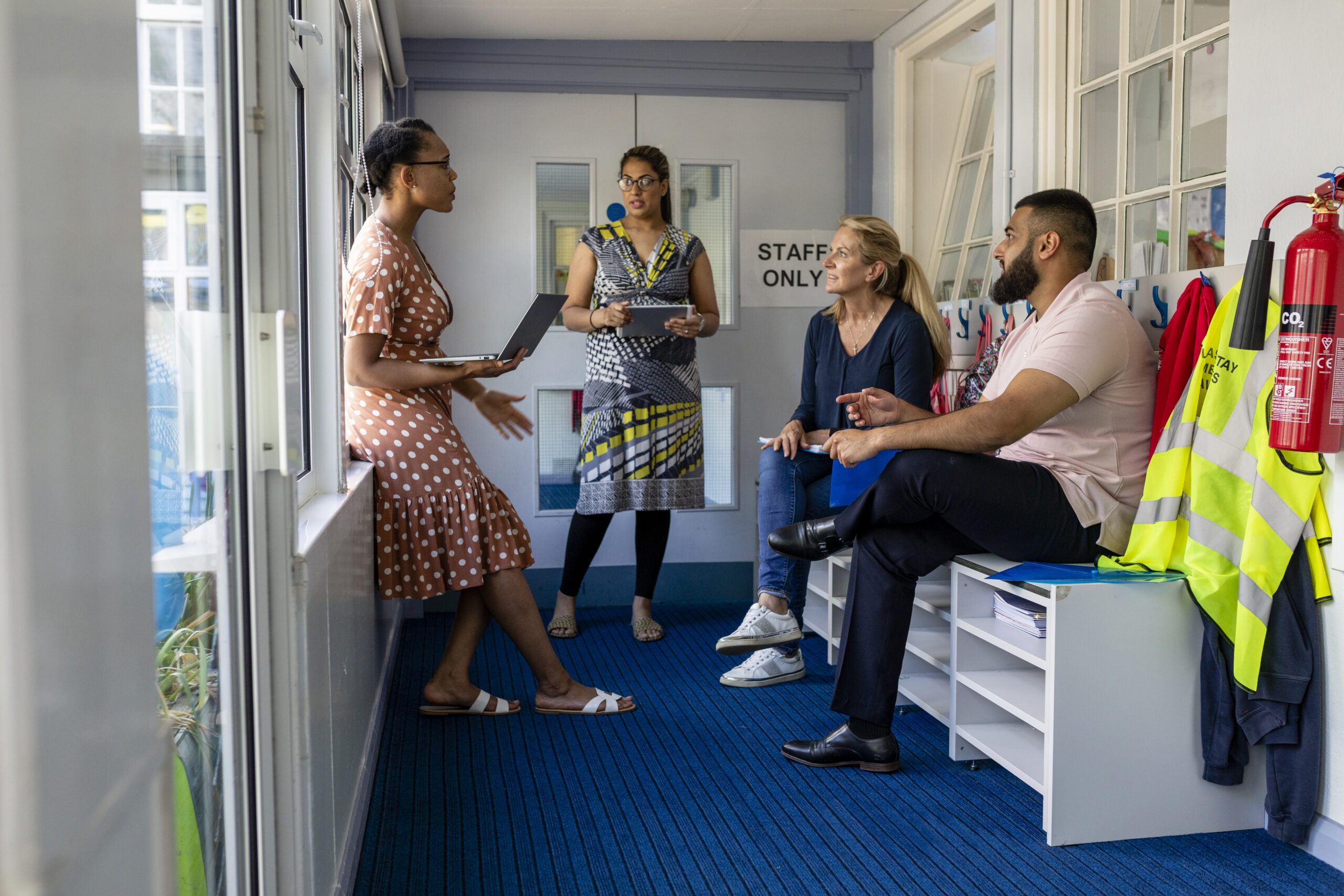Creating space for staff breaks is often a concern for school administrators and wellness professionals. One of the most common questions we hear is, “What items are needed in break spaces to reduce staff stress?” However, we’ve learned that ensuring staff have a space in schools for a break has less to do with the “stuff” in the rooms and more to do with the supportive environment it creates.
School professionals are experiencing unprecedented challenges since the COVID-19 pandemic. There is a need to support students’ social and emotional needs more than ever before. The Collaborative for Academic, Social, and Emotional Learning (CASEL) has found that “social-emotional learning (SEL) efforts both contribute to and depend upon a supportive school environment with strong and positive relationships. Adults in the school help shape this environment by practicing and modeling their own SEL.” Having a space to retreat to during stressful situations is important. Providing a relaxation space for staff to practice ongoing mindfulness, reduce stress, and take time for self-care can help with the ongoing demands placed on staff throughout the workday.
When leadership designates a break space, it sends a message to staff: You are important, your challenges are seen, and taking care of yourself is important and welcome within our school environment. In fact, we recommend that leadership directly communicate this message upon the launch of a staff break room and regularly remind staff of the space’s existence. Additionally, when school leadership use the space themselves, they are modeling and providing a sense of “permission” for other staff members to do the same.
Although the items in the rooms aren’t the most important, it is helpful to ensure that staff voice is incorporated when developing spaces. Surveying staff to understand what they would value in a rejuvenation or break space is the best way to create an inclusive space that honors staff’s needs. It’s also important that this space, whether it’s called a well-being space, wellness room or rejuvenation room, is separate from a lunchroom or simply just an area away from students.
In conclusion, staff break spaces are important for fostering a supportive school environment. Leadership can increase the impact of the space by communicating the space’s purpose, modeling its use, and involving staff in its design.
We would love to support you in creating these vital spaces for your school or district staff to foster a happier and healthier environment. Register for our upcoming webinar “Spaces in Schools for Staff Breaks” on March 14. You can also find other sessions for this series “Prioritizing Well-Being Among School & District Staff, Educators & Administrators” through the registration link.
For additional resources please visit Well-Being Spaces for Teachers and Staff.



